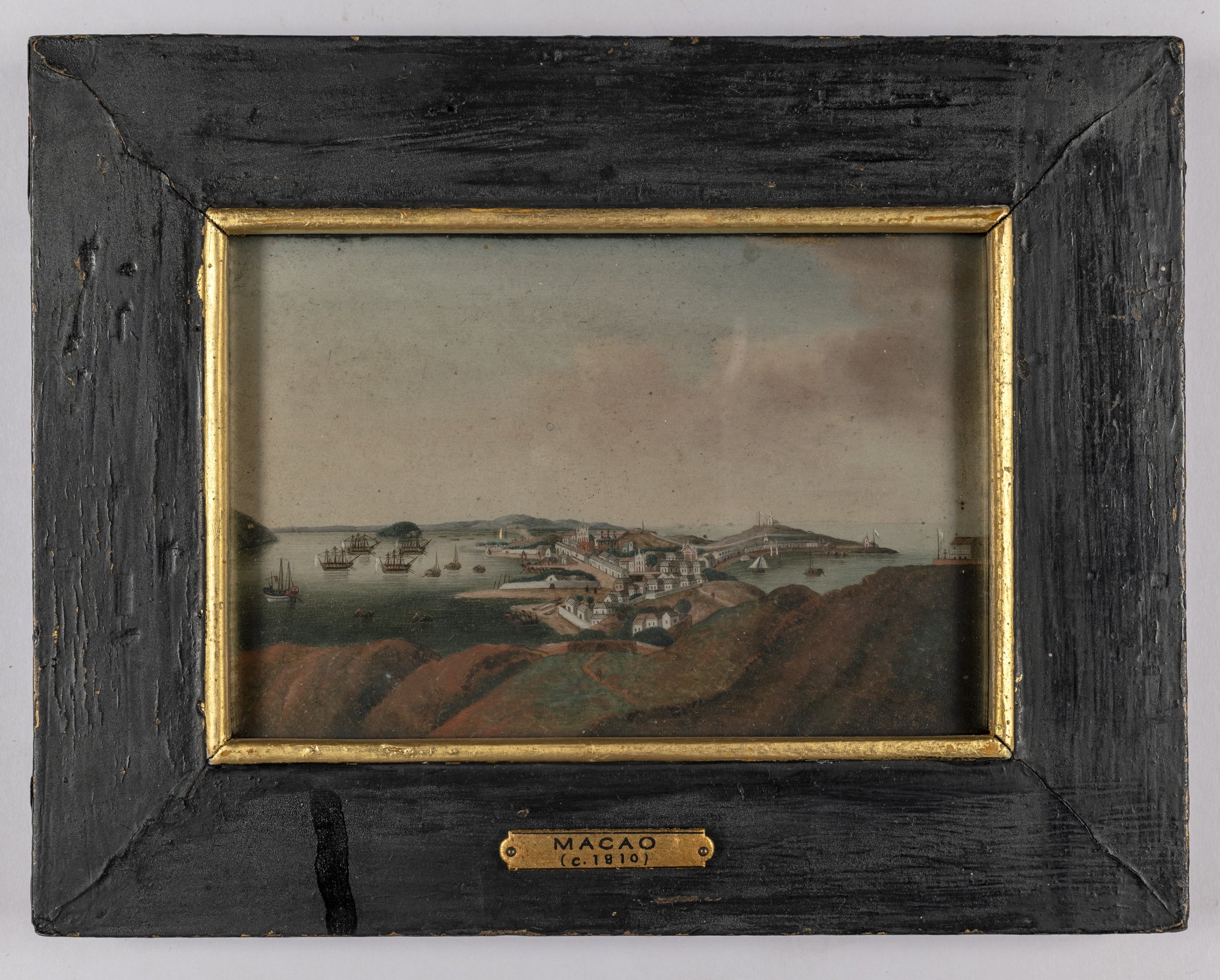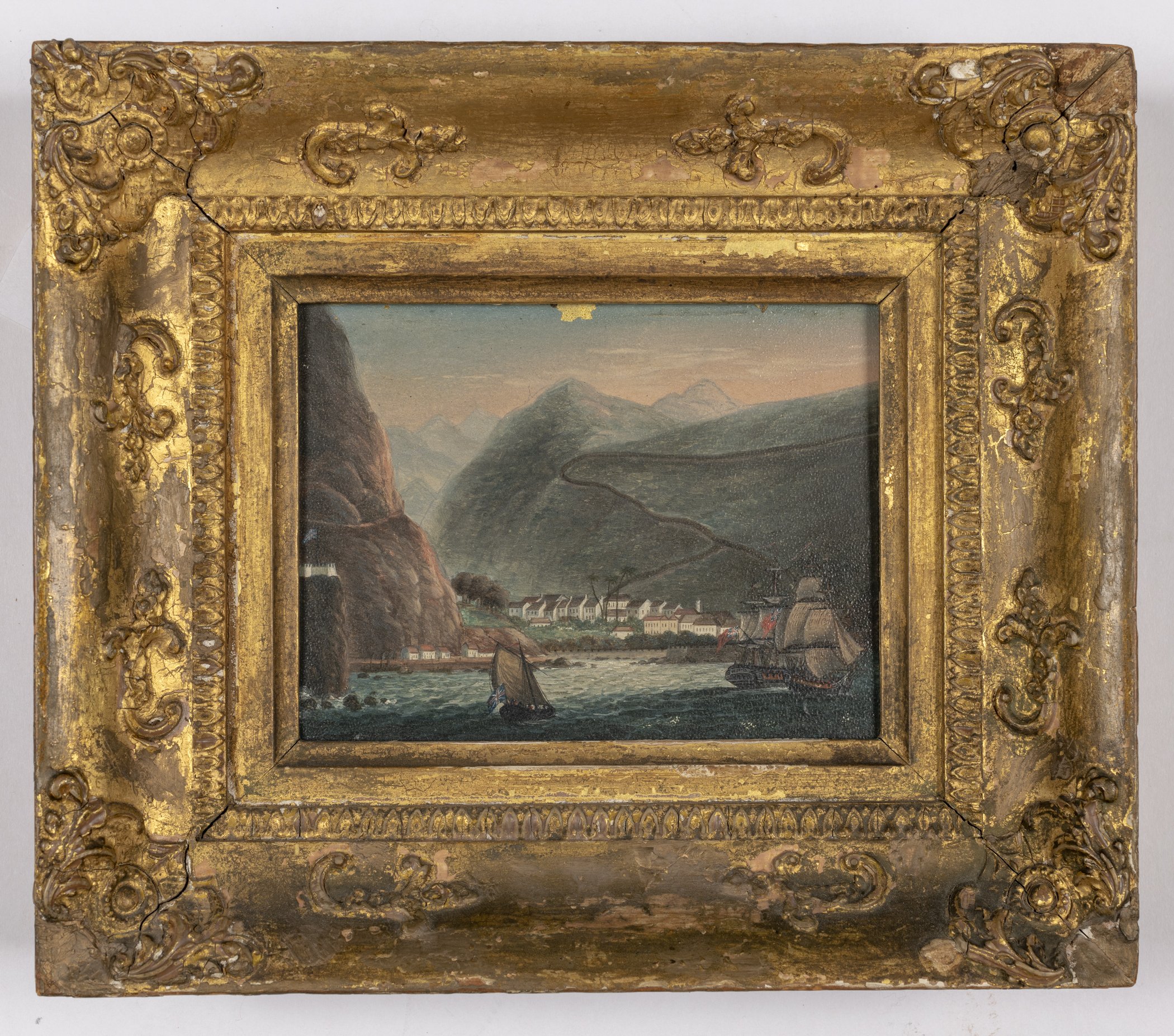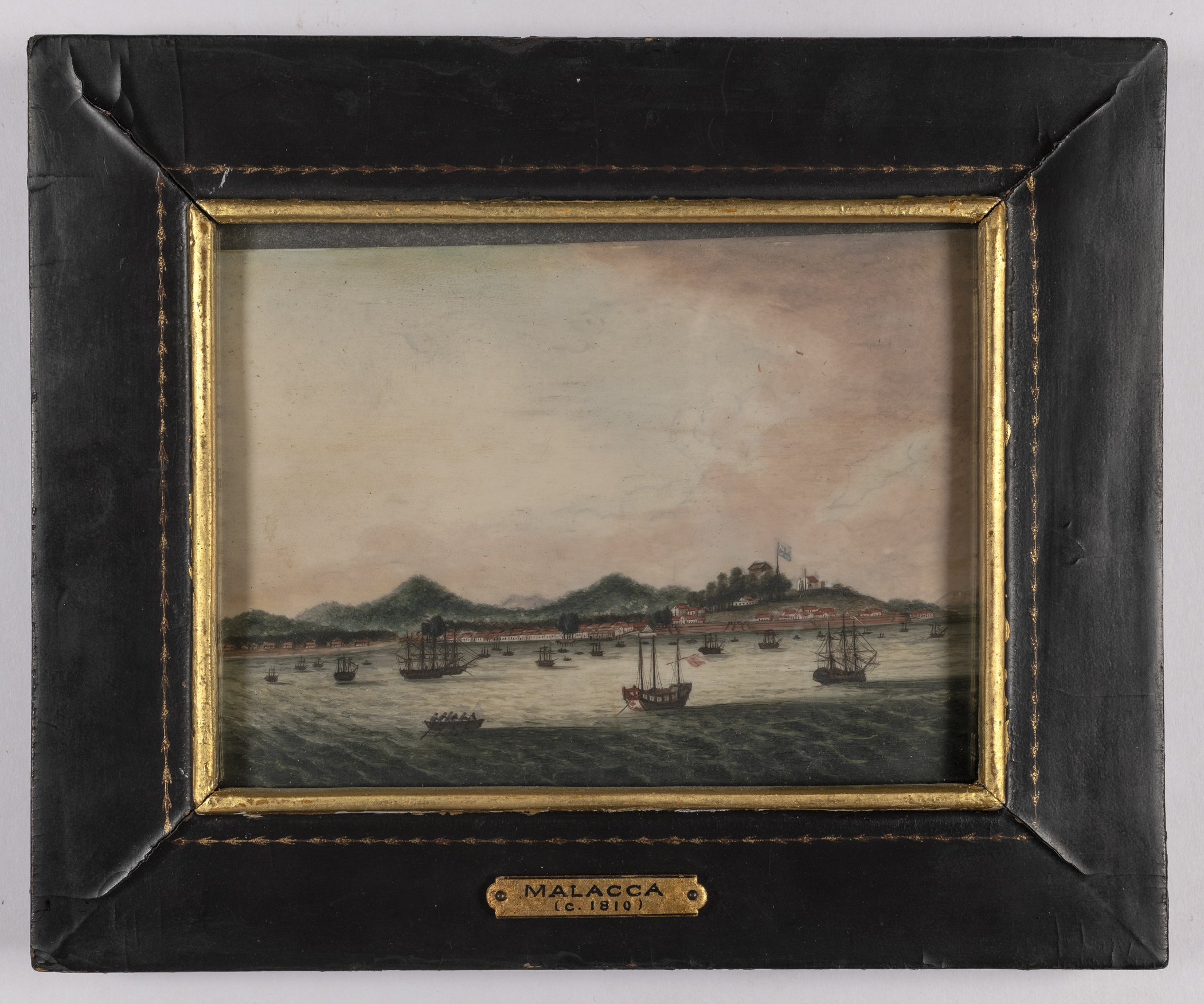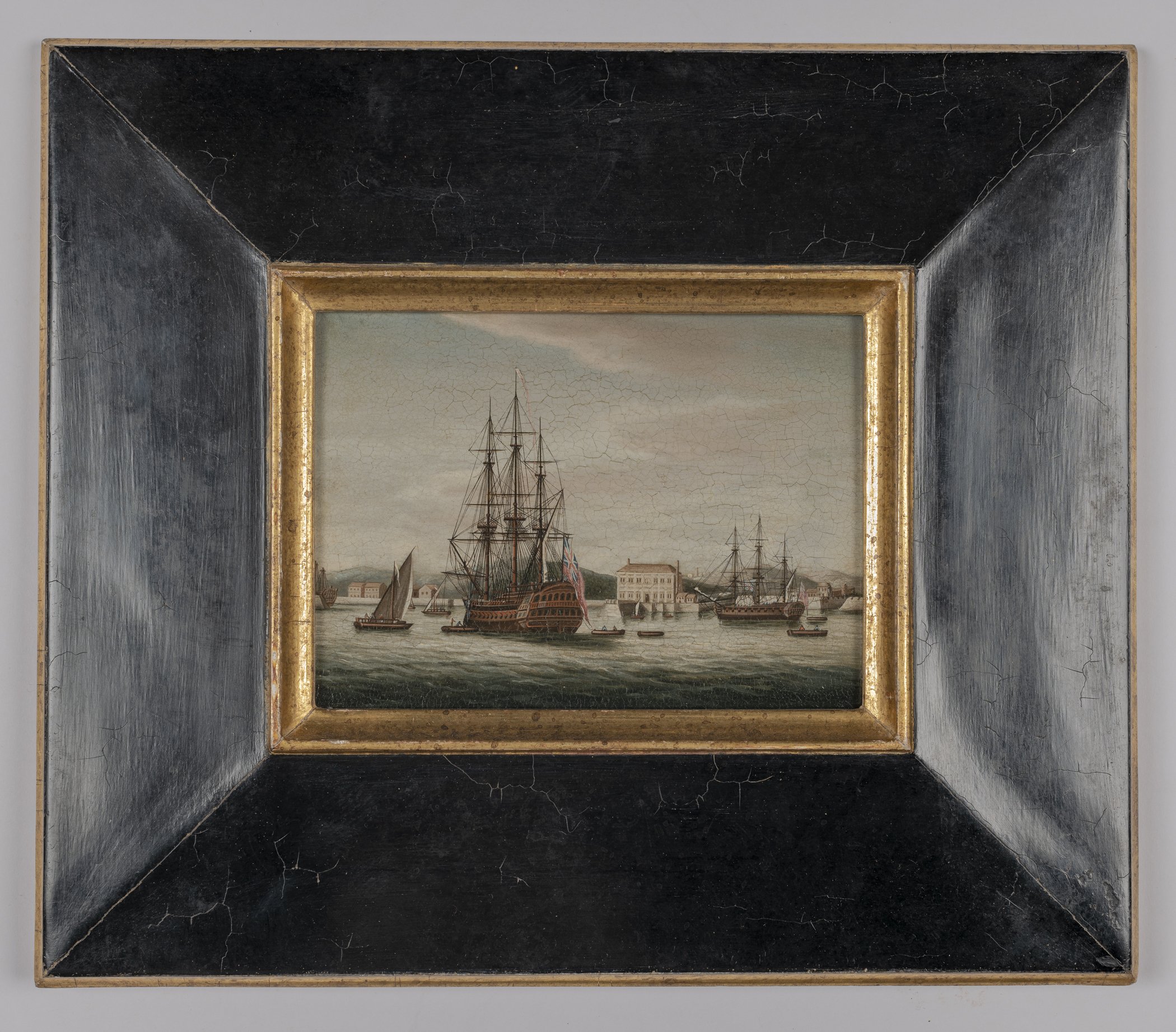
RESEARCH PROJECTS
A record of recent research projects I have conducted in art history and conservation in various formats.

“Made in China”: The Material Compositions of Six Chinese Export Landscape Miniatures from the Winterthur Museum, Garden & Library
NEH Graduate Fellow at WUDPAC
This project is my WUDPAC second-year science research project that focuses on nineteenth century Chinese export painted landscape miniatures on ivory and metal in Winterthur’s collection and seeks to investigate their material compositions. The results of this investigation aim to illuminate the trade routes associated with the materials that influenced Chinese export painters’ artistic decisions and agencies when creating products for a foreign market. A sample size of six paintings representative of the two substrates were selected for analysis. The research methodology of this project will involve consulting China Trade historical literature and using scientific analytical techniques that will include X-ray fluorescence (XRF), polypeptide mass fingerprinting (PMF), Raman spectroscopy, Fourier transform infrared spectroscopy (FTIR), gas chromatography – mass spectrometry (GC-MS) as well as polarized light microscopy (PLM) and cross section analysis if necessary. Find paintings selected for analysis below.

Macao, c. 1810, pigments on metal (Image courtesy of the Winterthur Museum)

Jamestown, St. Helena, nineteenth-century, pigments on metal (Image courtesy of the Winterthur Museum)

Malacca, c. 1810, pigments on ivory (Image courtesy of the Winterthur Museum)

St. Helena, c. 1810, pigments on ivory (Image courtesy of the Winterthur Museum)

Whampoa, nineteenth-century, pigments on metal (Image courtesy of the Winterthur Museum)

The Estate of Indiaman Essex of Bombay, nineteenth-century, oils on copper (Image courtesy of the Winterthur Museum)

The Effect of Microemulsion Agarose Rigid Hydrogels on Reducing Stains from Xuan Paper Mounted Structures
Project in collaboration with Matthew Cushman (Conservator of Paintings and Affiliated Professor at WUDPAC)
This project was derived from the Conservation Cleaning Methods Course taught by Matt Cushman during the Fall semester of my second year at WUDPAC. Stain reduction using aqueous delivery methods for East Asian paintings were traditionally employed during the remounting process. Complete remounting treatments are time consuming and require someone with extensive mounting training. Remounting treatments are not always possible for East Asian mounted structures housed in American collections. To address this gap in American conservation and museum contexts of East Asian paintings, this ongoing experiment aims to explore the possibilities of using microemulsion agarose rigid hydrogels on reducing stains on the surface of mounted structures such as East Asian paintings without having to carry out a complete remountings. The goal is to create a hydrogel that can accurately deliver a solution with high moisture retention (limiting lateral spread of the solution) without allowing moisture to penetrate beyond the surface of a mounted structure while leaving no residue. The research questions of this experiment include:
Can we make a microemulsion hydrogel? Does it work? What are the agarose concentration limits?
What are the parameters involved in adjusting the swelling power of a microemulsion hydrogel?
How can we control water retention and the amount of residue left behind?
Three microemulsions selected for experimentation
4% microemulsion rigid hydrogels made with EAPC microemulsion applied on a glass slide painted with two layers of PVA in ethanol


Art Materials Research and Study Center, National Gallery of Art, D.C. (2018-2020)
In this opportunity that situated me between the perspectives of conservation science, art history, and trade economics, I was encouraged to examine artists’ materials as not only as the building blocks of artifacts, but also as collection objects that require care and as primary sources for research. The collection was officially established in 1994 to house art materials, technical information and trade literature (advertising, customer technical communications and catalogues). The idea to build a collection like this was of Zora Pinney, she was an art materials enthusiast who ran an art materials retail store in California in the 1970s. In her store, she sold a lot of products that she tested herself and personally selected ones that she believed artists should use. Her donation of 6000 artist materials established the basis of this collection. Many of the first items were from the 1970s. The collection eventually expanded beyond that time frame into the 1980s up until now. The collection also includes vintage materials from the 19th century and the early 20th century. There are also artist specific materials in the collection – mostly donations from the artist’s studio and their foundation at the time of the artist’s death. The items in this collection are from domestic suppliers and manufacturers and also international ones. In my position, I spent my time caring for this collection - photographing, cataloging, taking care of donations, distributing information and samples to researchers and conservators around the globe. There are now more than 24,000 items housed in this collection and the materials database has since been completed and is a valuable resource for the Conservation Department at the National Gallery of Art.
Andrew W. Mellow Artists’ Materials Research Assistant at the National Gallery of Art, D.C.
The Art Materials Research and Study Center collection.
Sample entry in the materials database.


Indian Ink: Chinese Ink Sticks (墨) Reinterpreted in Nineteenth-Century Britain (2018-2020)
Andrew W. Mellow Artists’ Materials Research Assistant at the National Gallery of Art, D.C.
This project investigates the intersections of Chinese and European ink traditions. This story began with a nineteenth-century Charles Roberson & Co. presentation box tucked away in the treasure trove of collection items in the Art Materials Research and Study Center at the National Gallery of Art in Washington, D.C. The box from the well-known British artists’ supplier contained a combination of artists’ materials representing a fusion of East Asian and European art practices – two very distinct aesthetic traditions. The box included ten color cakes embossed with the Roberson emblem, six brushes, a ceramic China tile and a Chinese ink stick. Nineteenth-century British colourmen catalogues and instruction manuals labeled Chinese ink sticks (墨) on the British market as “India Ink.” The narratives associated with the Canton System (1757-1842) and the understanding of carbon black pigment materialities in the East Asian and European cultural contexts further revealed that India Ink, the liquid medium recognized in the Western art historical canon today, was derived from Chinese ink sticks imported into Europe from China. I am particularly interested in tracing the cultural value of the Chinese ink stick from its origin in China to its reinterpretation in nineteenth-century Britain. How were Chinese ink sticks prepared and used by British artists at the time? Why was the use of Chinese ink sticks favored in standard art practices? How were British artists introduced to Chinese ink sticks? This project aims to investigate these questions through exploring the nineteenth-century cultural dialogues that continue to influence current understandings of ink in both the East Asian and European art historical canons.
Charles Roberson & Co., Presentation Box for the Department of Science and Art, mid-late nineteenth- century, 19 cm x 7.5 cm x 3 cm, Art Materials Research and Study Center at the National Gallery of Art, Washington, D.C.


Between Fantasy and Familiarity: Chinese Tea Culture and Painting Traditions in Historic Deerfield’s Album: Tea Production (Summer 2018)
Summer Research Fellow at Historic Deerfield Inc.
Tea is interwoven with American identity and refinement in both the colonial and post- colonial era. By the late eighteenth-century, tea was associated with American social life, customs and traditions. To further understand the role of tea in American history, it is important to examine tea culture from its place of origin in China and identify the reasons behind Western fascination for the Chinese export aesthetic beginning in the early seventeenth century. This project seeks to understand the place Album: Tea Production (ca. 1790), a set of early Chinese export watercolors from the Historic Deerfield Inc. collection, occupies in both American and Chinese histories. An accordion-styled album with 24 watercolor paintings, the Deerfield tea album was a set of early Chinese watercolors made for the export market during the Canton System (1757-1856). The narratives unpacked from Album: Tea Production offer further insight into the extent in which the English misinterpretation of Chinese tea culture affected the American relationship with tea. The conclusions drawn from the examination of the album aim to highlight the Chinese narratives in Chinese export art that are often overlooked in Western scholarship.
“A ridiculous story about monkeys” from Album: Tea Production. Album: Tea Production, ca. 1790, gouache, watercolor, ink, silk on Chinese paper, 13 ½ x 12 1/8 x 1 inches, Historic Deerfield Inc., HD 56.428. (Image courtesy of Historic Deerfield’s Collections Database).
“Taking of Wild horses and killing one for eating” from Album: Tea Production. Album: Tea Production, ca. 1790, gouache, watercolor, ink, silk on Chinese paper, 13 ½ x 12 1/8 x 1 inches, Historic Deerfield Inc., HD 56.428. (Image courtesy of Historic Deerfield’s Collections Database).









